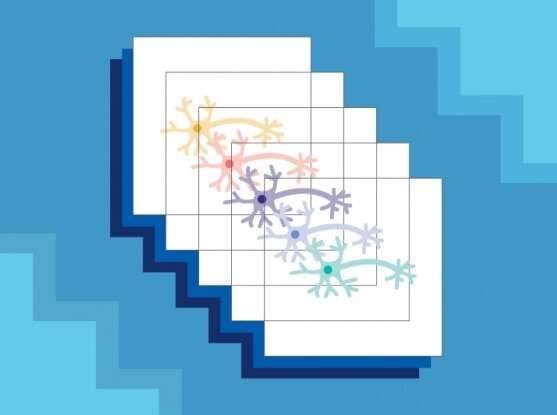New tool integrates diverse single-cell datasets, aids definition of cell types

Single-cell research reveals minute details about cells that may be overlooked in other analyses. Biologists currently use a range of methods to gather single-cell data on diverse tissues and species. One researcher may use in situ (tissue-based) methods to look at DNA methylation in mouse neurons while another uses droplet methods to examine RNA expression in human neurons.
These studies create many distinct datasets that cannot be easily combined. But, combining these data to compare all aspects of similar cells across multiple individuals, tissues, and species is necessary to truly understand the distinct roles of cell types.
Described in Cell, a new tool created by Evan Macosko, an associate member of the Stanley Center for Psychiatric Research; Joshua Welch, a visiting scientist at the Stanley Center, and their team brings these pieces together. Linked Inference of Genomic Experimental Relationships (LIGER) integrates data from diverse single-cell datasets; groups similar cells together across different subjects, species, or molecular measures; and maps the relationships of different groups to one another.
Other common single-cell dataset integration methods eliminate differences between datasets. But these differences can be biologically important, for example, when comparing healthy and disease-affected cells. LIGER both preserves differences and recognizes similarities, enabling richer analysis.
When researchers load datasets in LIGER, the tool uses a statistical method called "integrative non-negative matrix factorization" to identify and cluster cells based on two defining characteristics: a set of factors unique to the cell's original dataset and a set of factors (which often correspond to biologically meaningful signals) shared with cells across datasets. This approach enables researchers to more clearly view shared and distinguishing features among cells from different sources.
The team tested LIGER four ways. First, they used the tool to quantify mouse brain cell-type variations across brain regions and between different animals. Second, they used LIGER to examine similarities and differences across species by comparing brain cells from humans and mice that came from the same region of the brain. Third, they used the tool to study the spatial relationships of mouse brain cells analyzed by single-cell and in situ RNA sequencing, matching scRNA-seq tested cells to their original brain locations. Fourth, the researchers used LIGER to examine the epigenomic features of mouse brain cells by merging scRNA-seq and DNA methylation profiles.
More information: Joshua D. Welch et al. Single-Cell Multi-omic Integration Compares and Contrasts Features of Brain Cell Identity, Cell (2019). DOI: 10.1016/j.cell.2019.05.006
Journal information: Cell
Provided by Broad Institute of MIT and Harvard



















